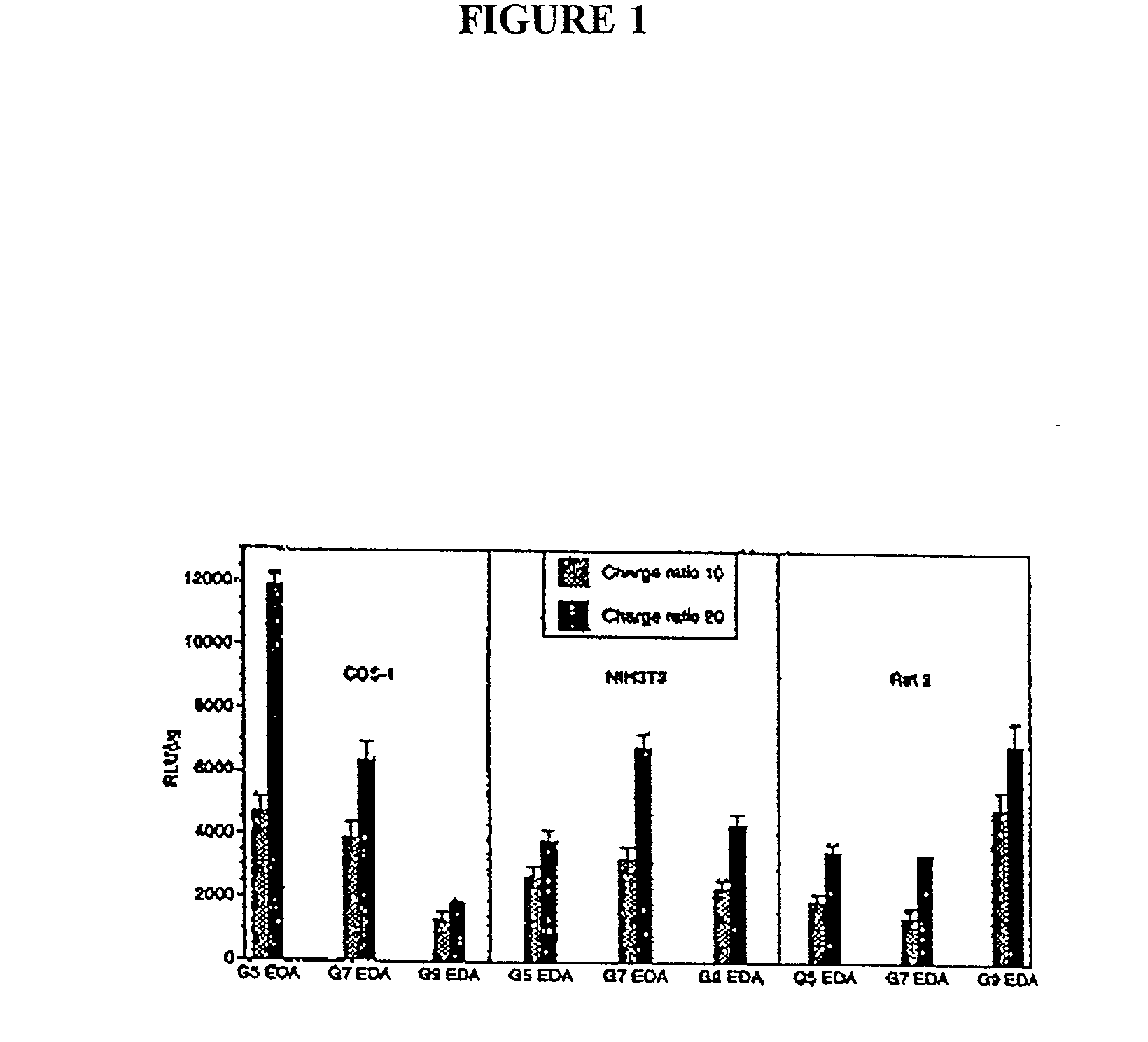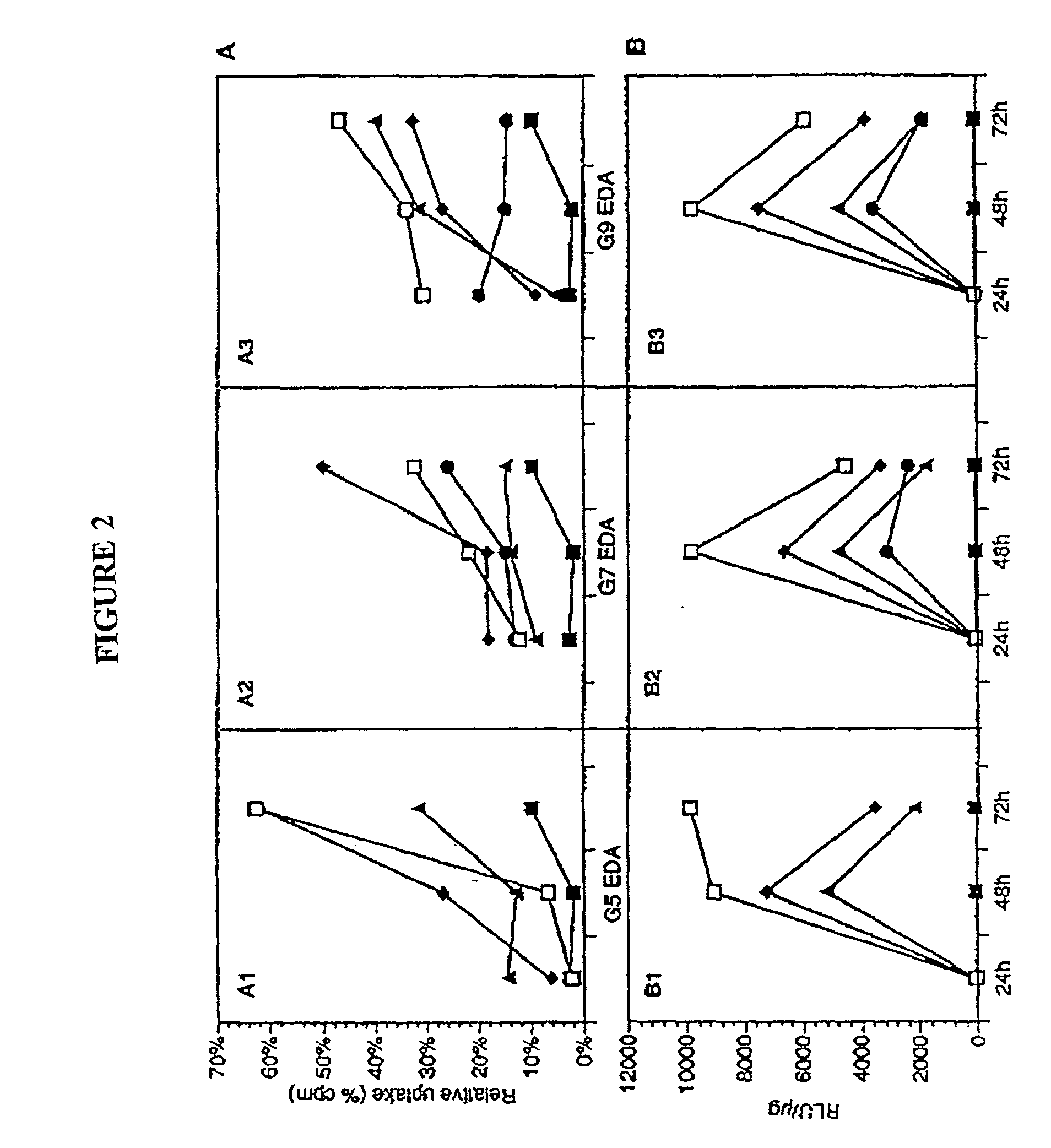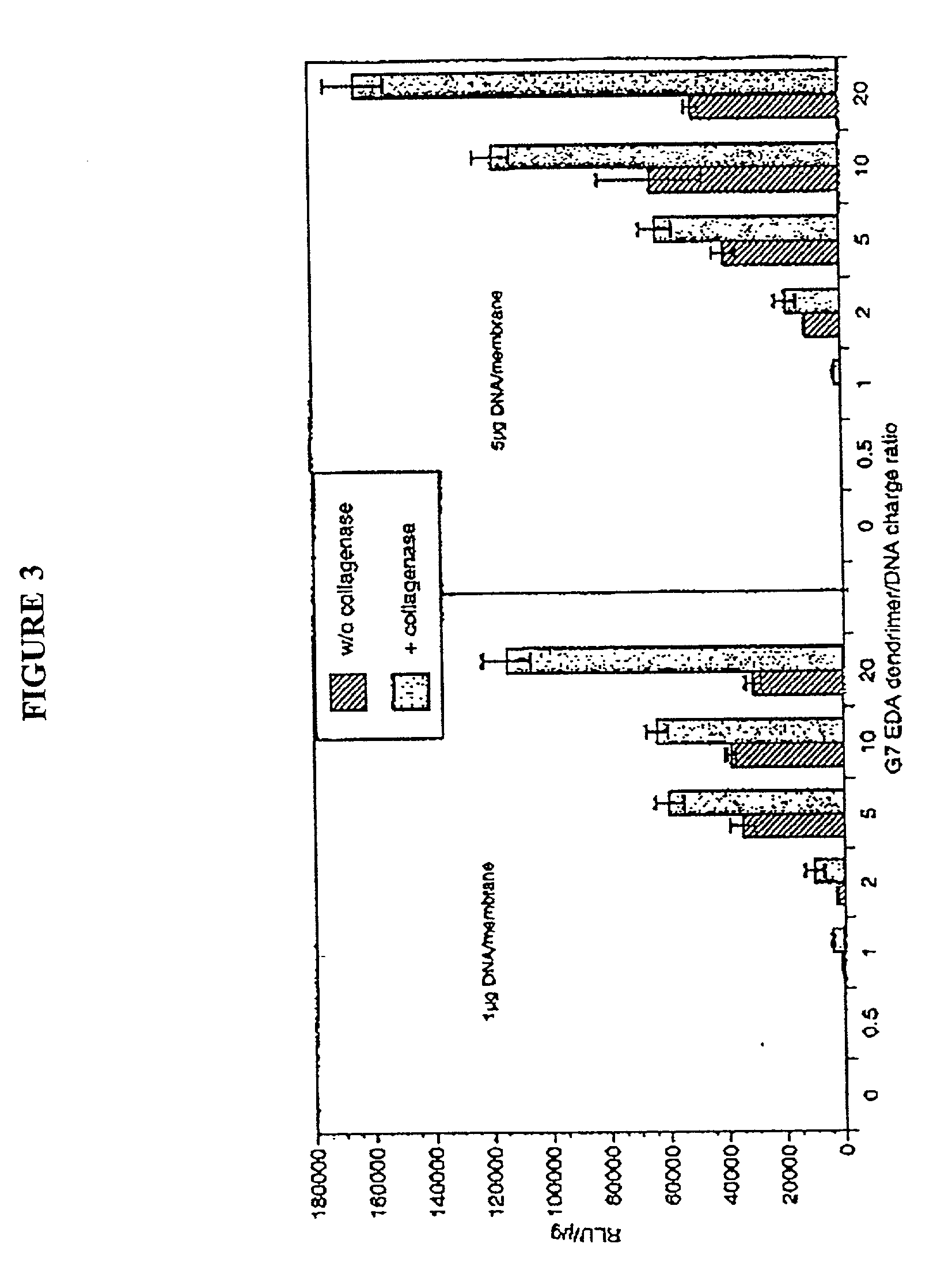Delivery systems comprising biocompatible and bioerodable membranes
a biocompatible and bioerodable membrane technology, applied in the direction of prosthesis, bandages, genetic material ingredients, etc., can solve the problems of large wounds with substantially compromised vascularization, microvascular disease, and wounds of certain subjects, and achieve the effects of facilitating delivery, promoting disassociation or distribution of dendrimers, and enhancing the expression of biologically
- Summary
- Abstract
- Description
- Claims
- Application Information
AI Technical Summary
Benefits of technology
Problems solved by technology
Method used
Image
Examples
example 1
Dendrimer Synthesis
[0130] Dendrimers were synthesized as described by Tomalia et al. (See e.g., Tomalia et al, Agnew Chem. Int. Ed. Engl. 29:138 [1990]; See also, Frechet, Science 263:1710 [1994]). Studies were performed with generation (G) 5, 7, and 9, EDA core PAMAM dendrimers with molar masses of 28,826, 116,493, and 467,162 Da and numbers of primary surface amine groups surface charges (amine groups) of 128, 512, 2,048 respectively.
example 2
[0131] Preparation of Biocompatible Membranes
[0132] This example describes methods used to prepare some of the membranes of the present invention. Poly(DL-lactide-co-glycolide) (PLGA) membranes were prepared by dissolving poly(DL-lactide-co-glycolide) (75:25 M.W. 75,000-120,000, Sigma) monomer in chloroform (10% wt / vol) and pouring the solution onto the surface of sterile siliconized Pyrex dishes. Chloroform was evaporated under bone dry nitrogen and the membranes were carefully removed from the glass surface and cut into 4 mm.sup.2 circles using a sterile skin biopsy punch device. PLGA membranes were stored at RT until use.
[0133] Collagen bilayers membranes were made by alkaline initiated polymerization of a Type I bovine collagen (Cell Prime, Collagen Biomaterials, Fremont, Calif.) solution using phosphate buffered saline, pH 7.2 (Life Technologies, Grand Island, N.Y.) as a diluent. The concentration of type I collagen in both layers of the biofilm was 2.2 mg / ml. The base layer of...
example 3
[0135] Plasmids
[0136] The following reporter plasmids were employed in these studies: pCF1-Luc, pCF1 CAT and pEGF1. These plasmids have been described in detail elsewhere (See e.g., Yew et al., Human Gene. Ther., 8:575 [1997]; Raczka et al., Gene Ther 5:1333 [1998]; Baumann et al., J. Histochem. Cytochem., 46:1073 [1998]). Plasmid DNA was amplified in bacteria and then isolated by double cesium chloride gradient (See Tang et al., Biocong Chem 7:703 [1996]) to ensure the purity (e.g., removal of endotoxin) of the DNA preparation.
PUM
| Property | Measurement | Unit |
|---|---|---|
| concentration | aaaaa | aaaaa |
| concentrations | aaaaa | aaaaa |
| time | aaaaa | aaaaa |
Abstract
Description
Claims
Application Information
 Login to View More
Login to View More - R&D
- Intellectual Property
- Life Sciences
- Materials
- Tech Scout
- Unparalleled Data Quality
- Higher Quality Content
- 60% Fewer Hallucinations
Browse by: Latest US Patents, China's latest patents, Technical Efficacy Thesaurus, Application Domain, Technology Topic, Popular Technical Reports.
© 2025 PatSnap. All rights reserved.Legal|Privacy policy|Modern Slavery Act Transparency Statement|Sitemap|About US| Contact US: help@patsnap.com



